South America is an endless generator of top-class footballing talent, as both the past and present make evidently clear.
Plenty of the game’s most prestigious clubs, such as Real Madrid, Chelsea and Manchester City, have made it a habit to recruit players directly from South America in recent years.
LaLiga giants Los Blancos reportedly claim credit for starting this trend among Europe’s powerhouses.
The Spanish side introduced some changes to its recruitment processes in recent years, and chief scout Juni Calafat, a Brazilian citizen, has played no small role in that.
One of the latest young South American talents to leave the continent to pursue glory in Europe is 19-year-old Damián Pizarro, who was signed from one of Chile’s biggest clubs, Colo-Colo, by Italian Serie A side Udinese for a reported €3.5m.
Pizarro was one of the top-performing teenage attackers in senior South American football this year — so it’s no surprise he caught interest from abroad sooner rather than later.
This tactical analysis and scout report provides analysis of Pizarro and two more thrilling teen goalscorers who have been producing displays of the highest quality in South America this year — Fluminense’s Kauã Elias and Liverpool Montevideo’s Renzo Machado.
Our analysis will go into detail on the ways in which these players have fit their respective teams’ tactics, along with the key strengths and weaknesses of their games.
Renzo Machado Scouting Report At Liverpool Montevideo – 18 Years Old
First up in our analysis is 18-year-old Renzo Machado (177cm/5’10”, 73kg/160lbs) of Liverpool Montevideo.
A Uruguay U20 international born in the city of Rocha, the young attacker also has Italian citizenship.
Machado has truly broken into Liverpool’s first team this season, making 25 of his 38 senior appearances for the Uruguay Primera División club this year.
So far, in 2024, the attacker has accumulated 1584 minutes for his club in the league, scoring six goals (five non-penalty goals) and making four assists.
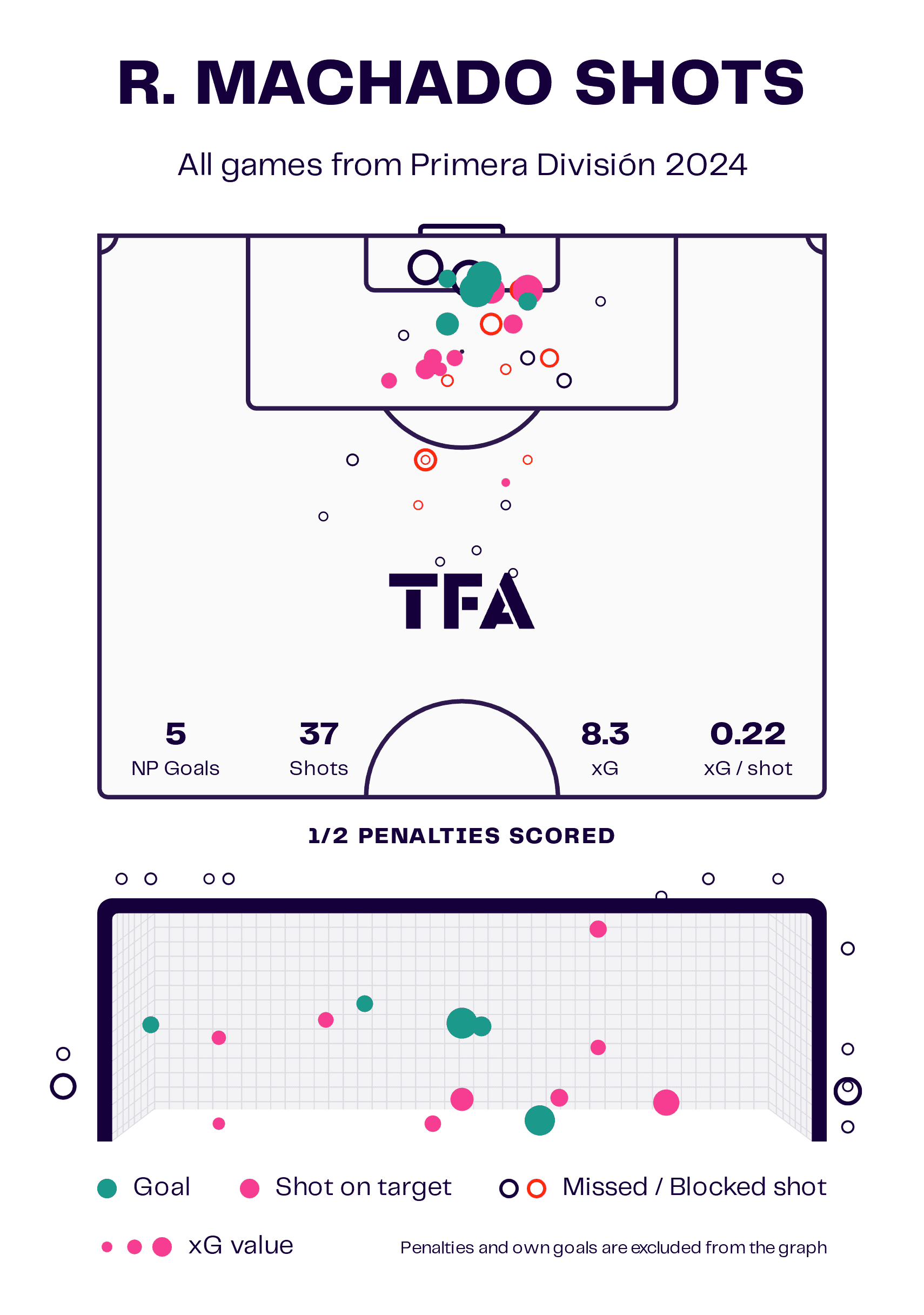
Figure 1 provides Machado’s shot map from the 2024 Primera División season; via this viz, we can see that the forward’s five non-penalty goals have come from a total of 37 shots, with the 18-year-old averaging 0.22 xG per shot this term.
While he’s got five non-penalty goals to his name this season, he could well have more as his 37 shots have generated 8.3 expected goals (xG) — a result of his top-class off-the-ball movement and positioning.
Machado has averaged 2.22 shots per game in the league this season, which isn’t a very high number of shots but places him in quite an average position for shot volume among strikers in Uruguay’s top flight this year.
Still, when the 18-year-old does get a shot off, it tends to be from a very valuable area, as his shot map indicates, highlighting a preference for quality over quantity in the department of attempts on goal.
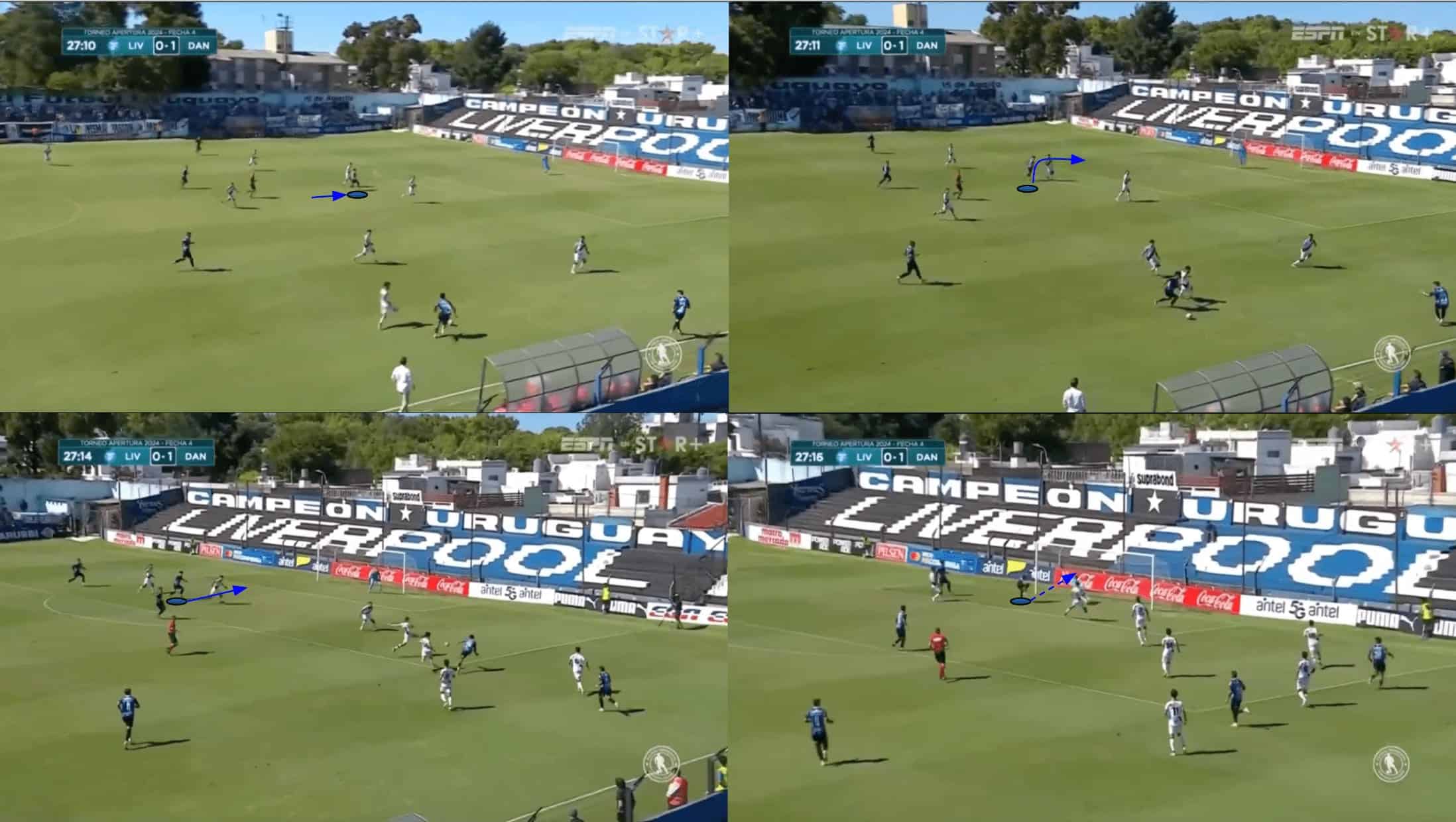
Figure 2 highlights an excellent bit of movement from Machado, which directly led to an equalising goal for his team.
Initially, the striker runs into the box between the two centre-backs, but as his team enters the final third, he diverts his run around the back of the furthest centre-back, putting him on the two defenders’ blindsides.
This little course correction allows Machado to enjoy plenty of space at the back post where he can meet his teammate’s cross on his own in the six-yard box and convert from point-blank range.
We can see how the striker has generated such a high xG per shot this season with little moves like this one that consistently put him in high-percentage goalscoring positions.
This move also clearly demonstrates how the attacker is well able to lose his marker in dangerous areas.
Machado is right-footed but relatively capable with his left foot, too.
He’s a quality finisher with his head, demonstrating a great head-on shooting technique that his teammates use via their crosses into the box at his head level.
In addition to all this, Machado likes to take penalties and clearly displays high self-confidence for a young player.
Machado contributes quite well in the build-up of attacks, demonstrating solid hold-up play in relation to his first-touch quick yet precise passing plays.
However, he doesn’t dribble much, preferring to move off the ball in the final third, and doesn’t contribute much on the defensive side of things at present, though that’s a skill that can be improved.
Kauã Elias Scouting Report At Fluminense – 18 years old
Next up, another 18-year-old attacker—this time, one born in 2006, unlike 2005, as is the case for Machado—we have Fluminense’s Kauã Elias (181cm/5’11”, 70kg/154 lbs).
Elias was scouted by Fluminense during his early teens and has developed within their system since.
His goalscoring prowess has been evident in every level he’s performed at thus far for both club and country, with the Brazil U17 international scoring nine in 12 appearances for his country in that age group so far.
Elias has only really become a senior player this year, with all but one of his 27 club appearances coming during the 2024 campaign.
Still, the young forward has needed little time to adapt to the senior level.
He has five senior goals to his name thus far, including four in 15 league appearances, totalling 669 Série A minutes.
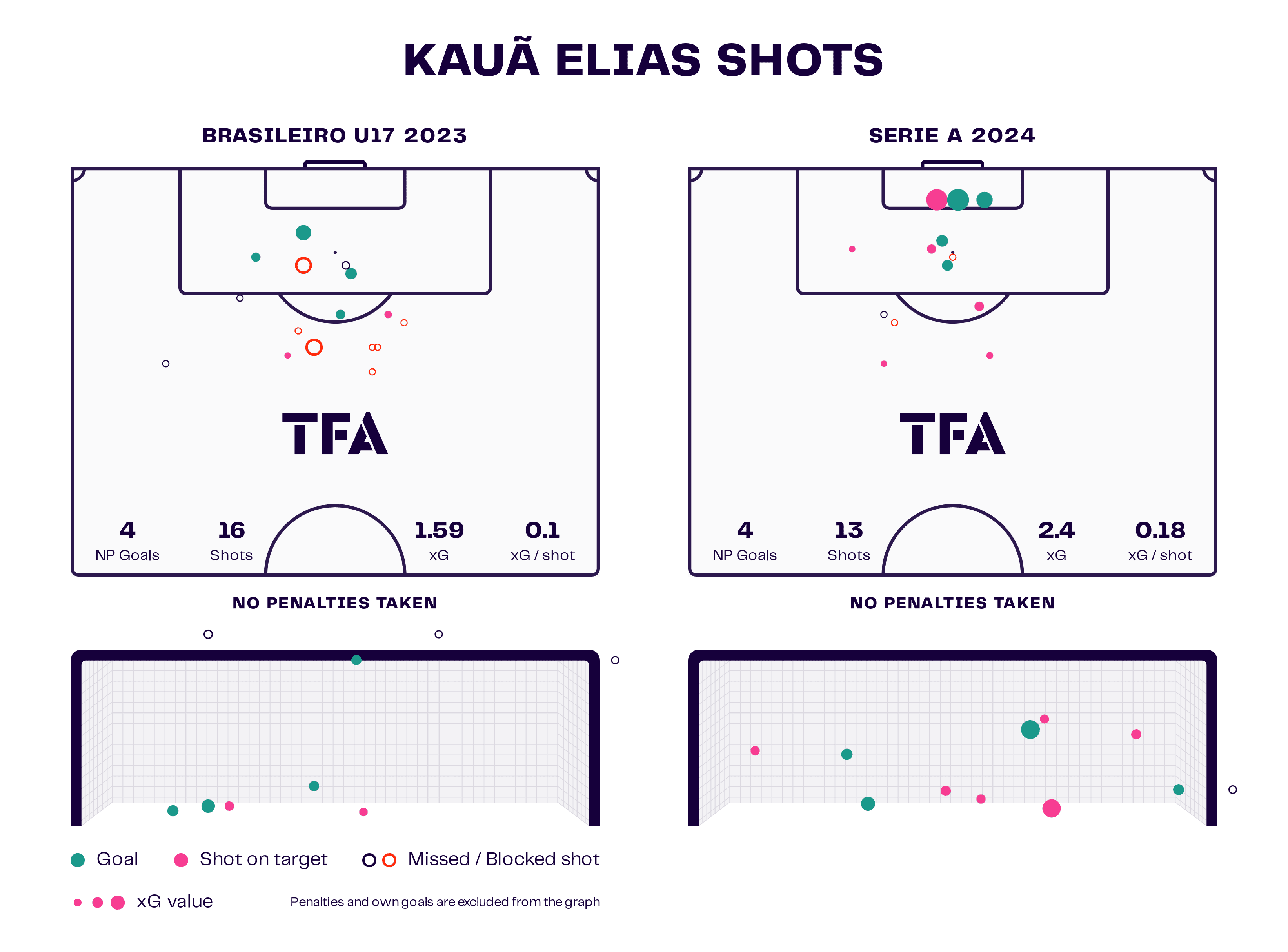
Figure 3 shows a couple of Elias shot maps; the one on the left is from the U17 league season last year, while the one on the right is from the 2024 league season at the senior level.
We can see a development this term with regard to Elias’ shot selection and positioning.
His four goals this term—at a higher standard of football—came from 13 shots that generated 2.4 xG, equalling 0.18 xG per shot, while last season’s four goals came from 16 shots that totalled 1.59 xG and an average of 0.1 xG per shot.
Elias’ shot locations this season have been far more logical and high-percentage.
Furthermore, Elias has hit a relatively low average of 1.75 shots per 90 this season, again demonstrating a preference for quality over quantity.

Elias has a wide variety of finishes in his locker, with the right-footed attacker having shown a strong ability to finish first-time, after a touch with time to think, from close and long-range as well as with his head.
Figure 4 shows an example of the striker intelligently peeling away off the shoulder of the nearest defender into a high-quality goalscoring position where he can meet the cross and powerfully head the ball past the opposition ‘keeper — a great example of the high-level off-the-ball movement that aids his goalscoring numbers.
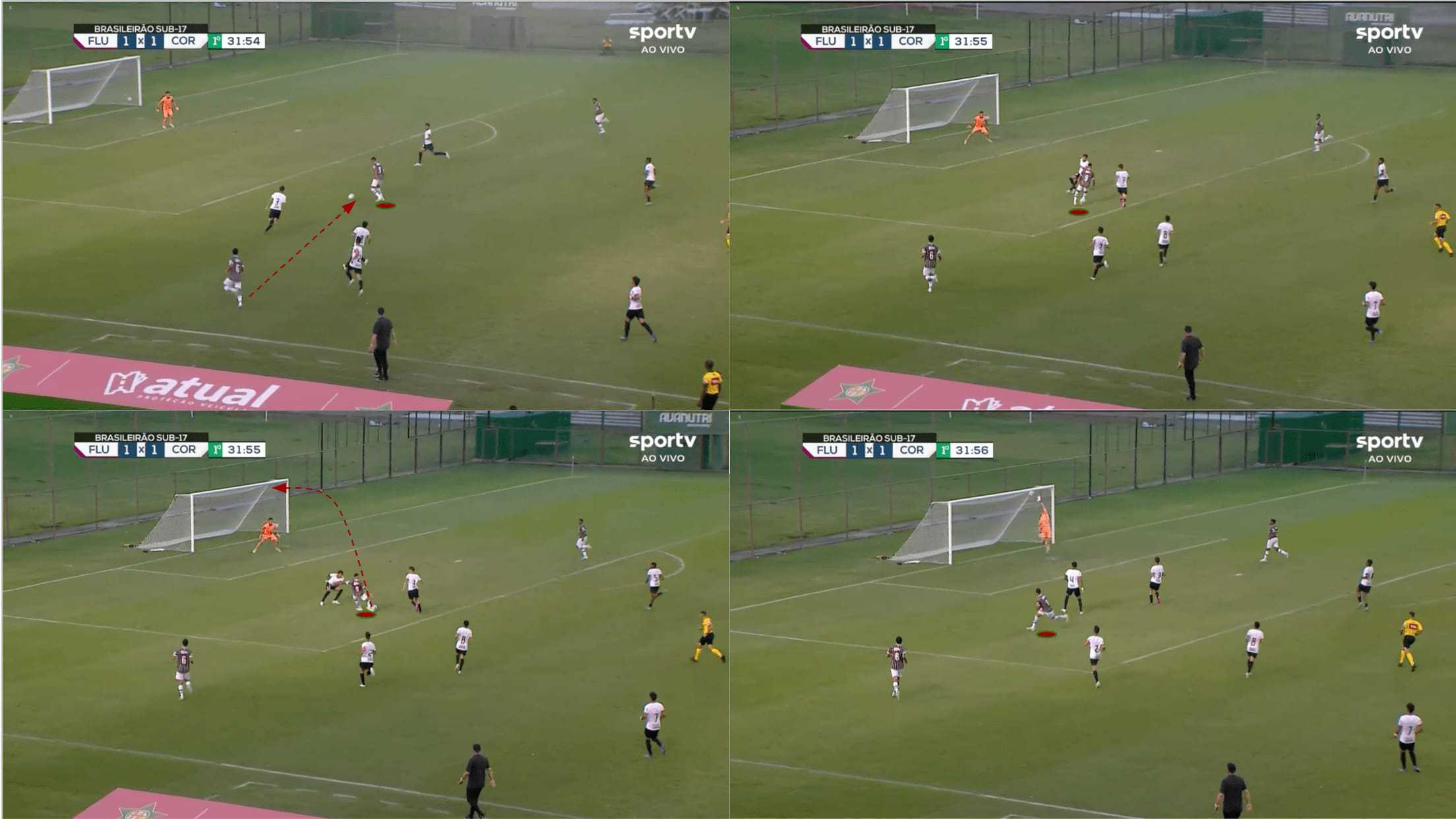
Meanwhile, moving on into figure 5, here we see an instance of Elias receiving and taking on a far more difficult shooting opportunity.
The young striker manages to curl the ball into the far top corner of the net, striking it just out of the goalkeeper’s reach, making this a wonderfully well-taken shot.
Note how the striker generated excellent power and curl without much of a run-up at all.
This season, Elias has generally shot from closer to goal and become somewhat ‘addicted to scoring’, as silly as that might sound.
In previous years, he would go for the spectacular more often, but this year, he’s been more ruthless about chasing easy goals.
This will likely be a pleasing development in his game for his coaches, who’ll know how difficult it is to find pure goalscorers, which Elias looks like he’s developing into.
Elias’ first touch is not always very reliable, but he is good at using his body in his hold-up play when receiving with his back to a defender.
The right-footed forward also offers a decent level of defensive contribution, so while his first touch might be worse than that of Renzo Machado, he is ahead of the aforementioned Uruguayan in his defensive game.
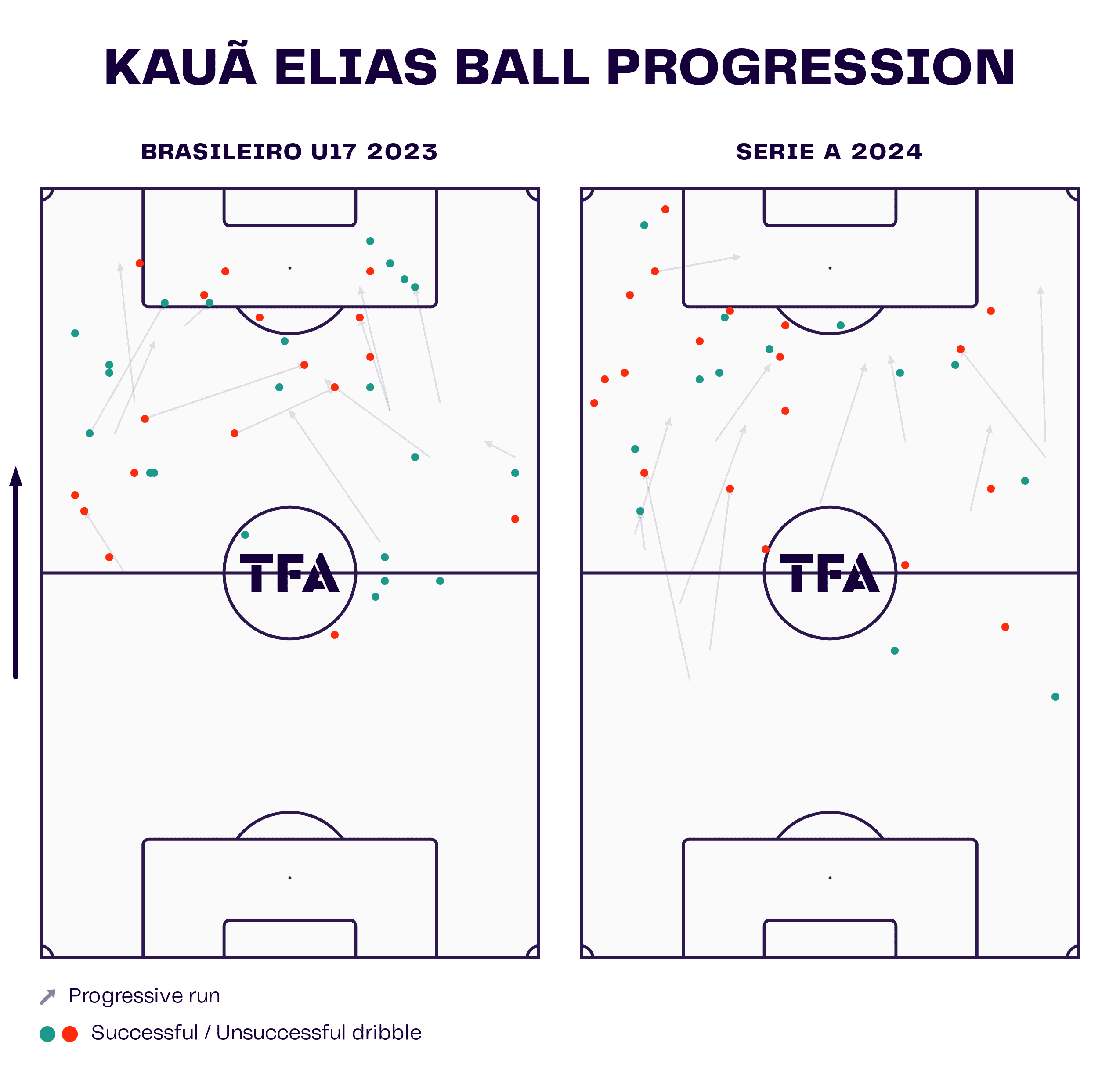
Elias is comfortable operating as a second-striker and taking more touches of the ball — especially outside the box — than Machado as well.
See the 18-year-old’s ball progression map — highlighting both successful and unsuccessful dribbles from the 2023 and 2024 campaigns, respectively, in figure 6.
More often than not, the attacker will either drop out to the left wing or left half-space to receive, turn and run at his defender, with the attacker often demonstrating solid technical ability in 1v1 duels and a decent level of pace.
You’d expect Elias to offer more than Machado in the chance creation phase outside of finishing, and the two attackers could actually complement one another.
Damián Pizarro Scouting Report At Udinese (Previously Colo-Colo) – 19 Years Old
That brings us to our final thrilling teen attacker from South America in 2024 — Damián Pizarro (187cm/6’2”, 75kg/165lbs), who has just joined Udinese from Colo-Colo this summer.
Another right-footed forward, Pizarro accumulated 688 minutes for Colo-Colo in Chile’s Primera División this season before his July move to Udinese.
He made 13 league appearances, scored five goals, and assisted one.
The striker also played a fairly significant role for Los Albos last season, totalling 22 league appearances in what was really his breakthrough campaign for the club, scoring six times and assisting a quartet of goals.
Like Machado, Pizarro was born in 2005.
As you can tell from his height—mentioned above—he’s the biggest of the three strikers we’ve chosen to analyse in this piece, standing at 187cm tall.
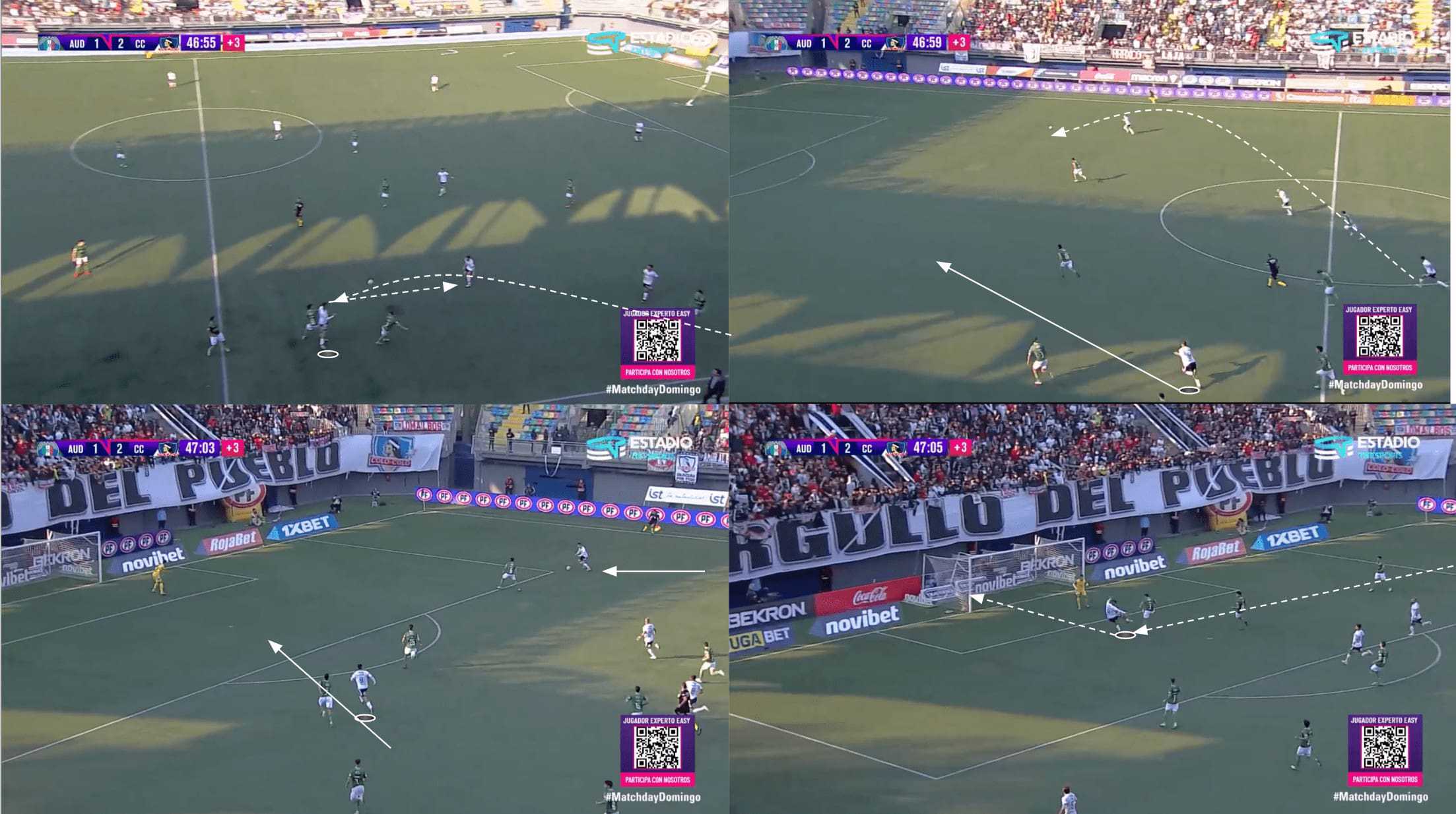
Pizarro’s height is something his team has looked to use in the past, as figure 7 provides an example of with Colo-Colo launching a throw-in up the wing towards the teenage attacker.
The young forward easily wins the header, knocking it down for his teammate before he drives forward and puts himself in a quality goalscoring position — again, like the other two strikers we’ve analysed in this piece, attacking the defender’s blindside — from where he can convert the opportunity and give his side a two-goal lead.
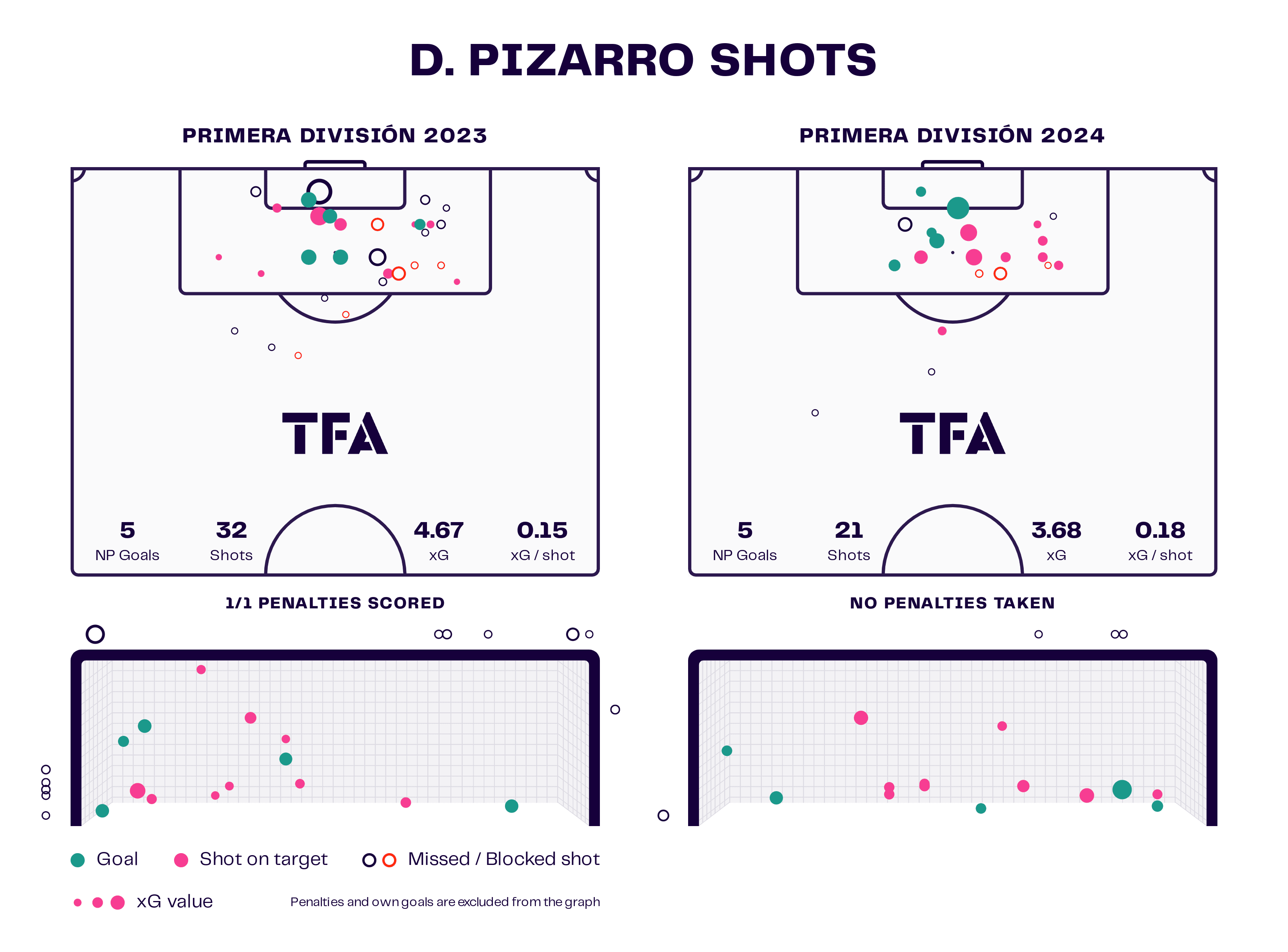
Pizarro’s shot map reads slightly better from 2024 than 2023 in terms of efficiency, with the attacker scoring the exact same number of non-penalty goals from 11 fewer shots.
Pizarro also generated 0.03 more xG per shot than he did last season during his time with Colo-Colo in the 2024 campaign, displaying some solid progression in terms of his shot selection and positioning.
The coach’s more frequent usage of central positions will also have played a significant role in that change.
With 2.75 shots per 90 in 2024, Pizarro is the highest-volume shooter of the three we’re analysing, though he still managed to retain a high shot accuracy rate of precisely two-thirds in the Chilean top-flight this term.
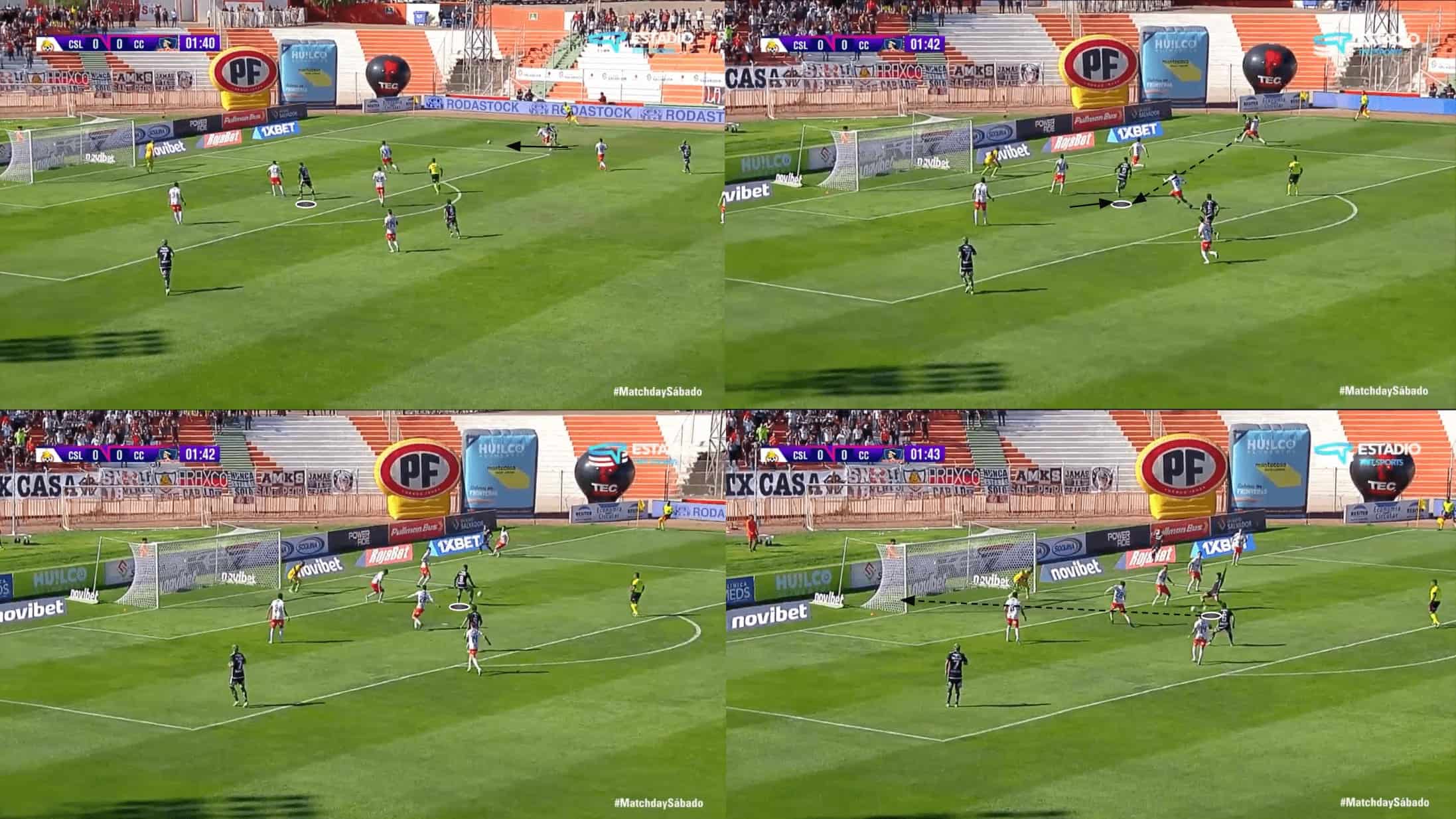
Pizarro’s movement is crucial to his goalscoring; figure 9 provides an example of the attacker drifting away from the centre-backs at the very last second and going into some free space where the crosser can find him with a pull-back just on the near corner of the six-yard box.
Though his first touch lets him down slightly as he receives and turns, he perseveres and still manages to get a shot off, which turns into a goal, highlighting the new Udinese man’s resourcefulness.
Indeed, Pizarro is another whose first touch is not at the level he’d probably like — Machado is the best of the three we’ve chosen to analyse in that regard.
At times, the 19-year-old Chilean’s first touch is far too heavy, and he lacks the agility to compensate, hampering his hold-up play.
You realistically want to find Pizarro either running into space towards goal where his speed, notable strength and size help him to build momentum that makes him very difficult for defenders to stop or in a position like we find him in figure 9 — just on the verge of pulling the trigger.
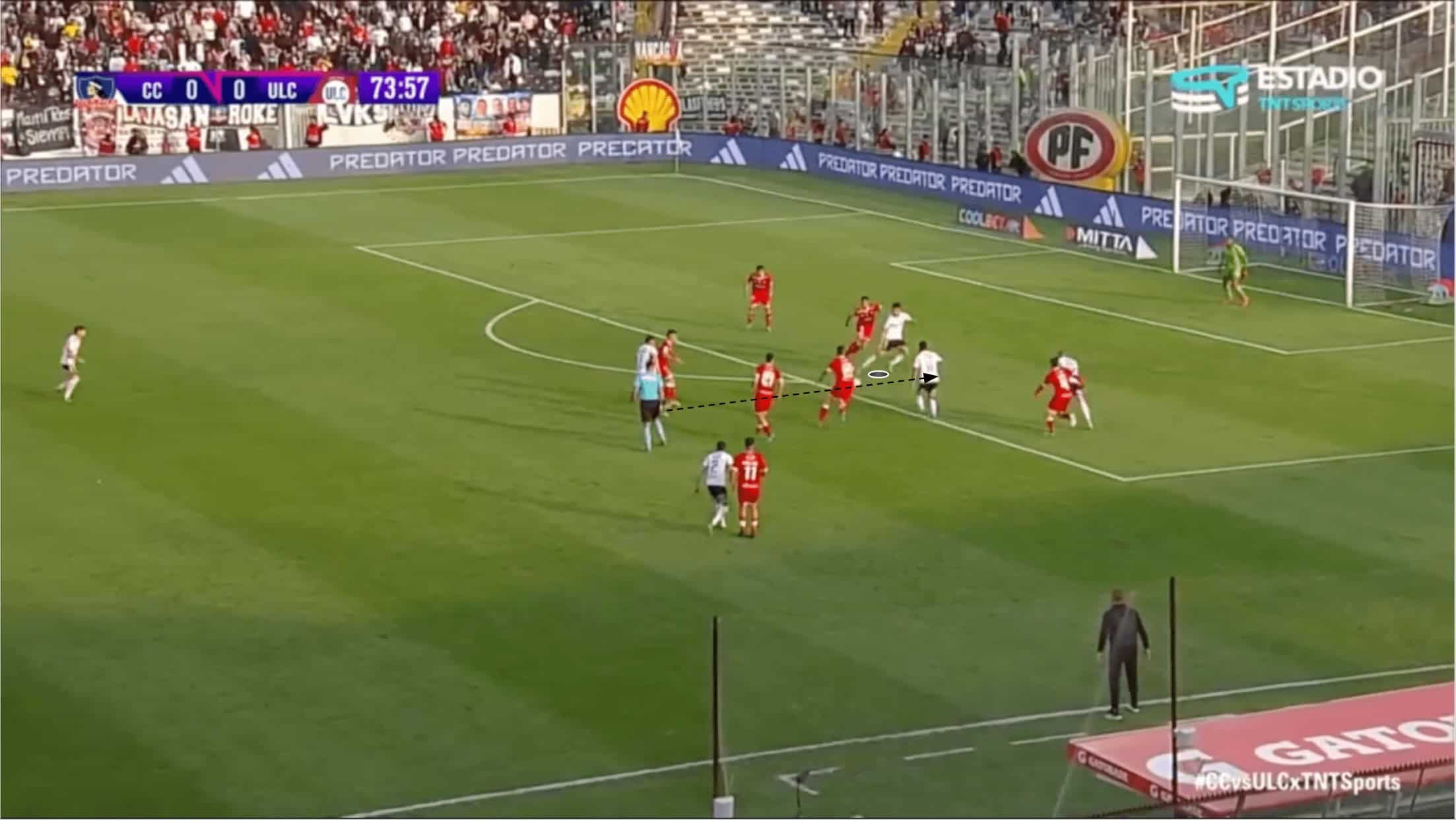
One thing Pizarro does really well when receiving the ball with a defender behind him is turn his body while protecting the ball, as figure 10 demonstrates.
The attacker rotates his body while placing himself between the defender and the ball, allowing him to take it in his stride as he receives.
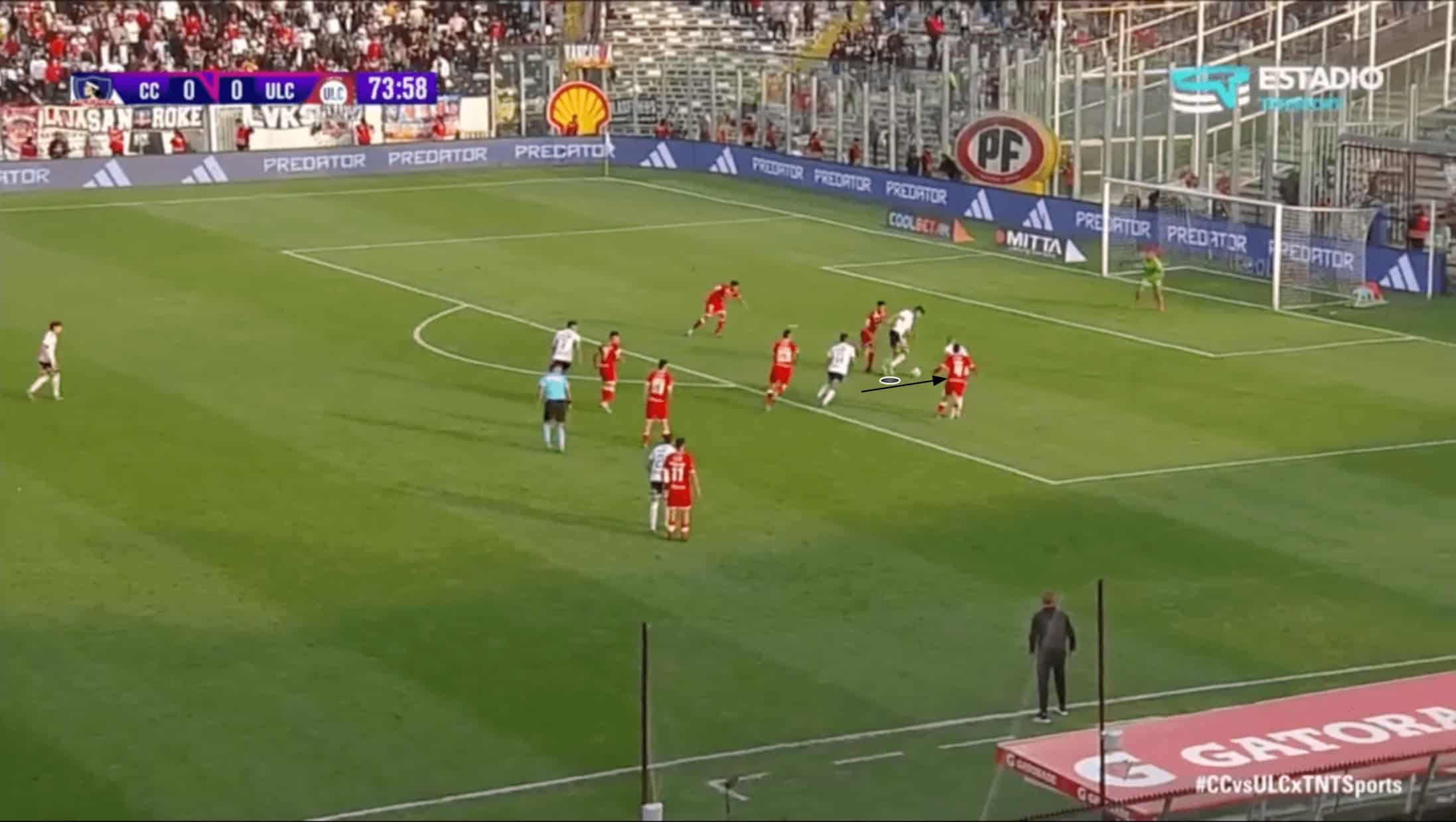
Moving on into figure 11, we see how this attack ends with the defender hopelessly chasing Pizarro as he allows the ball to roll towards goal, setting him up for an excellent shooting opportunity.
Conclusion
In conclusion, each of these three attackers are distinct from one another but each one has highly desirable traits that will make clubs at the highest level take note.
Machado is a confident young striker with great off-the-ball movement, positioning, and shot selection.
He can contribute well with his back to goal as well as facing forward, though he generally prefers not to get too involved in the chance-creation phase outside of finishing chances off.
As for Elias, this attacker has an excellent ability to contribute outside of finishing and putting the final touch on attacks.
He has great dribbling skills and chance-creation quality in his game.
Elias is a very well-rounded young attacker with a solid range of finishes in his locker.
With his off-the-ball movement and positioning improving all the time, expect even more efficiency to come from the Fluminense man as he continues his development.
Pizarro, meanwhile, is a bit of a bulldozer in some respects.
His physicality is a notable trait in the young attacker’s game, while he’s proven very difficult for defenders to knock off his stride.
Though his first touch and dribbling are not of the best standard, by playing to the young forward’s strengths, Udinese could have a major talent on their hands.

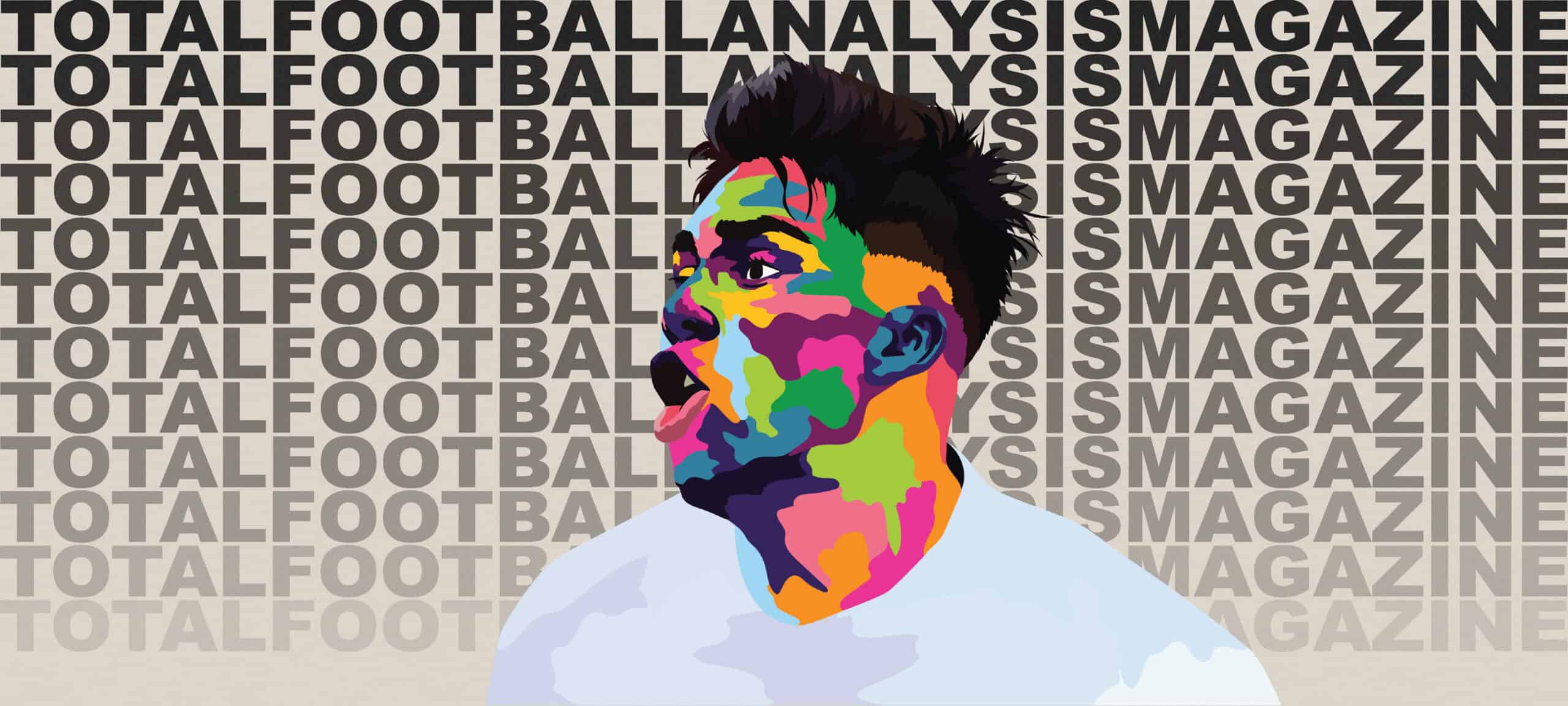



Comments